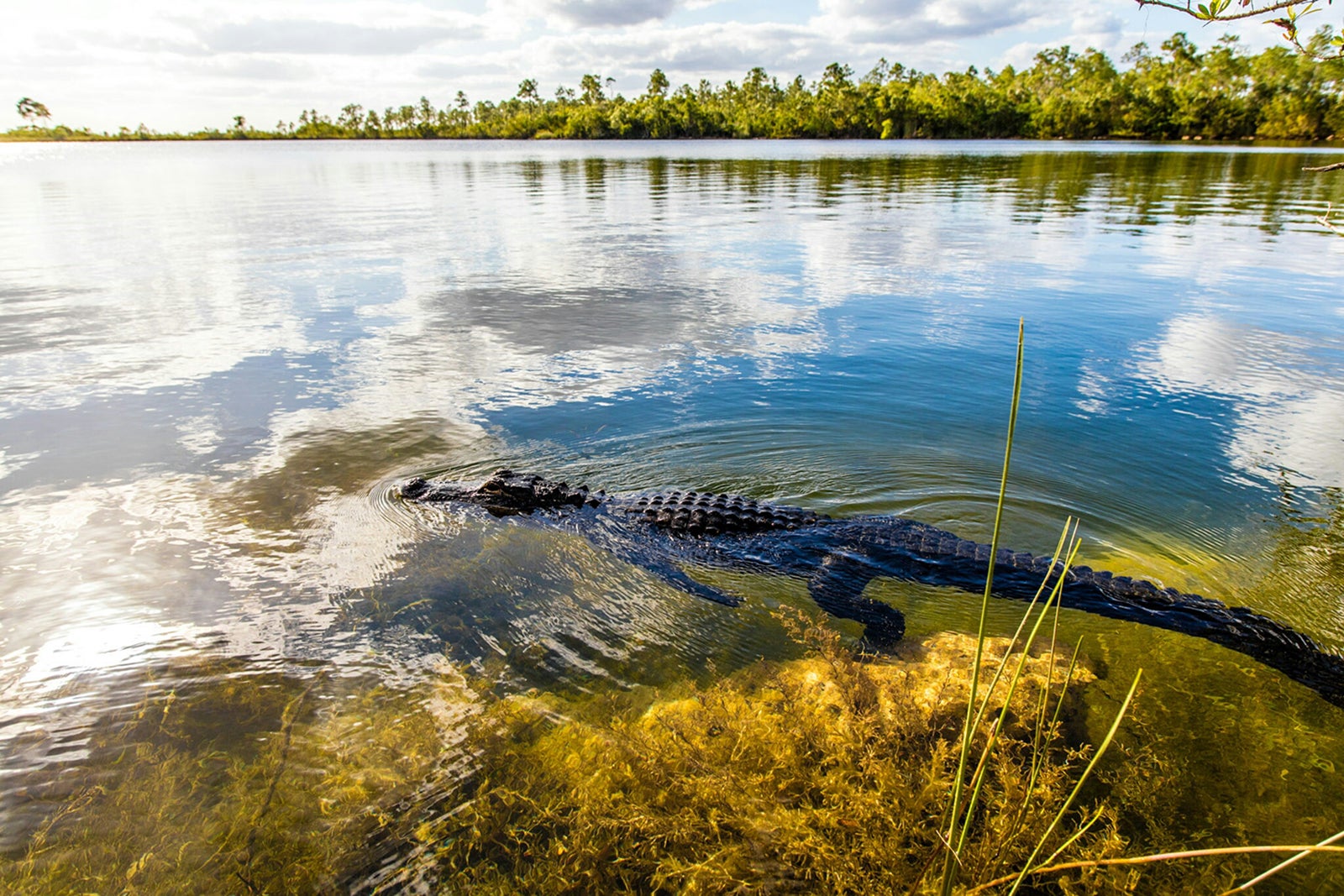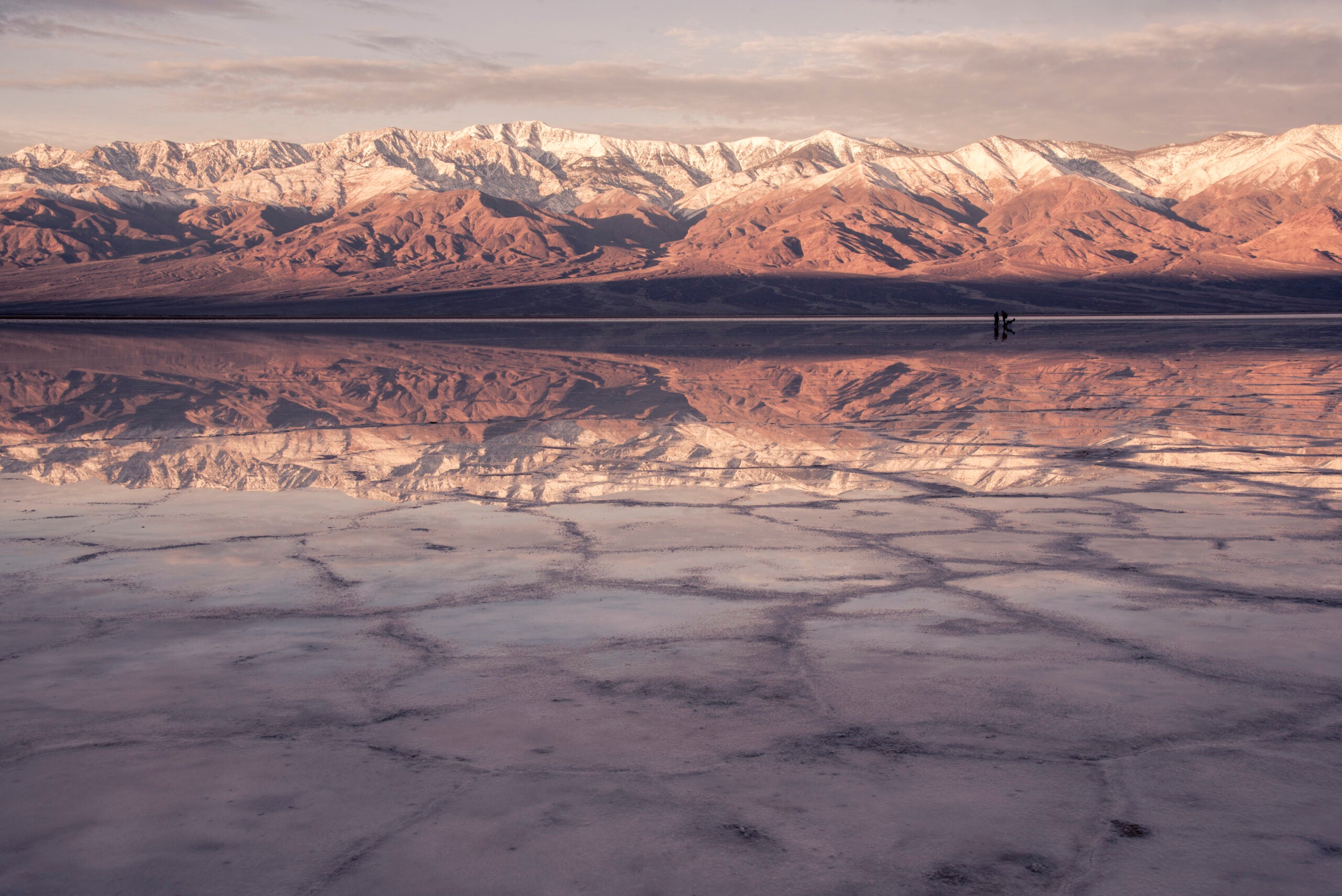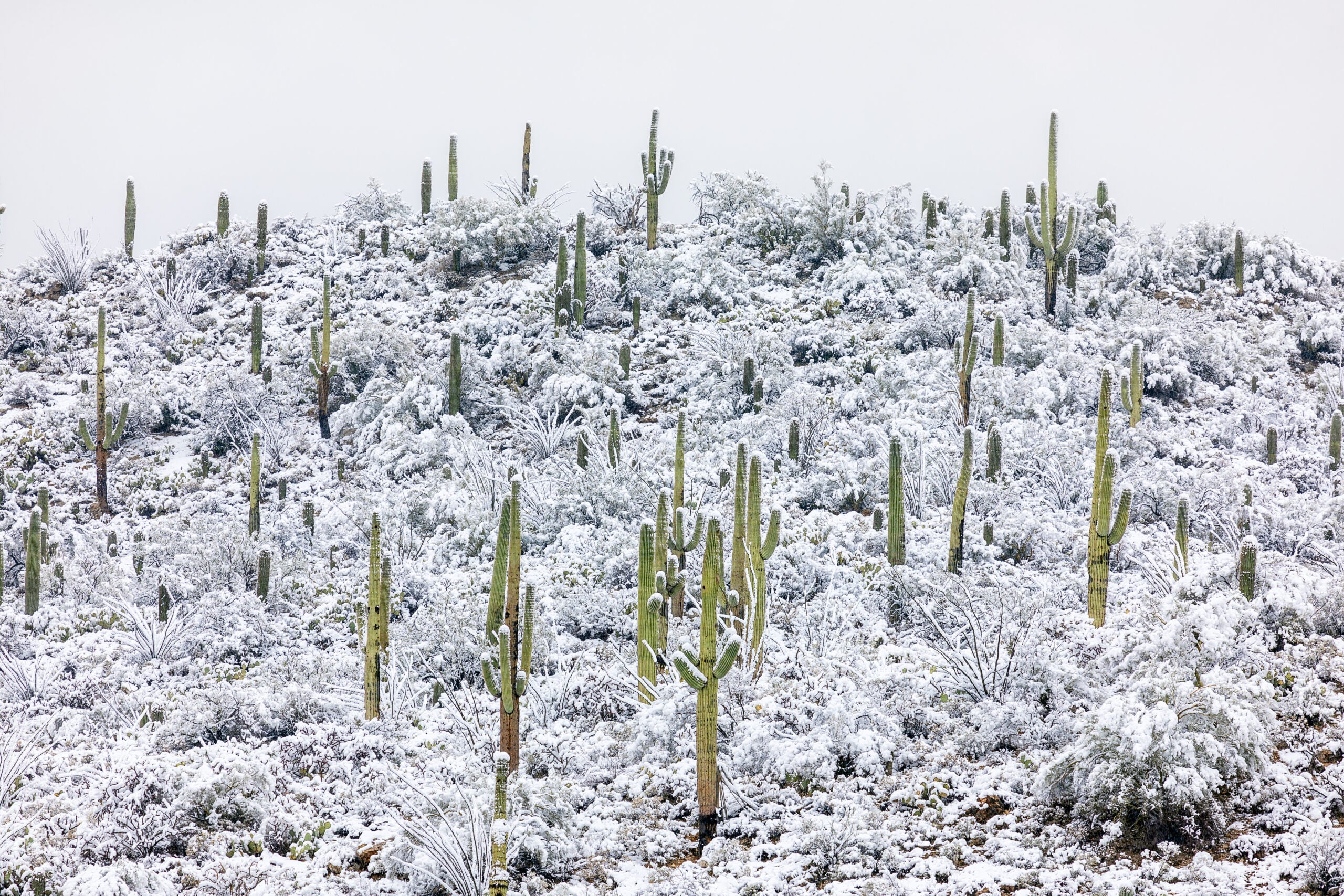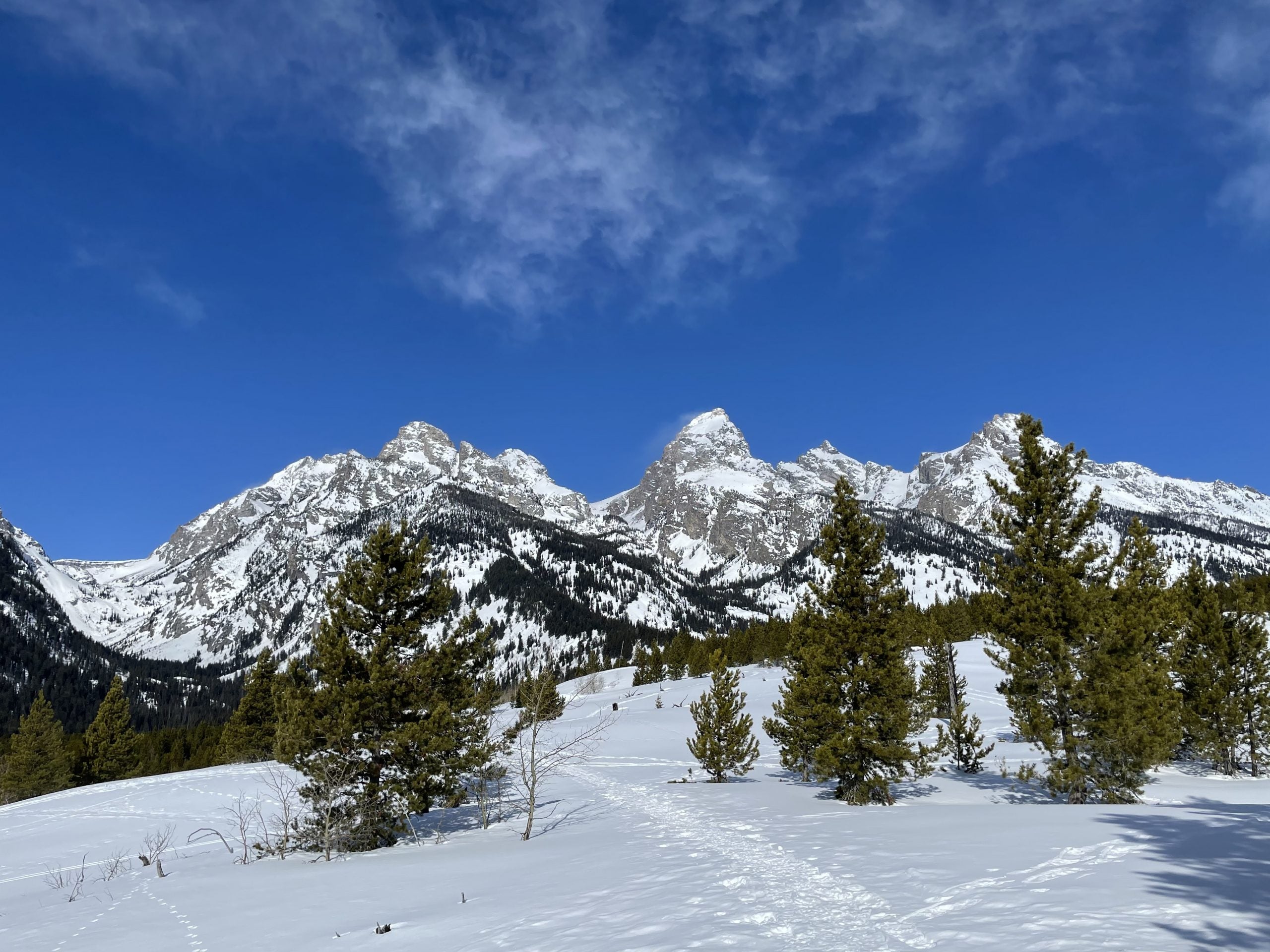Editor’s note: This is a recurring post, regularly updated with new information and offers.
Ken Burns was one of the many who’ve said it: The national parks were America’s best idea.
During the coronavirus pandemic, the allure of our nation’s parklands became even more powerful, with travelers seeking wild, outdoor spaces in droves. In 2020, some national park visitation numbers even ecilpsed 2019 levels. And in 2022, the National Park Service recorded 312 million recreation visits.
Fortunately, you can usually get a reprieve from the crowds — and still enjoy spectacular scenery — by visiting a national park during the winter. These are the national parks best seen in the wintertime, from striking snowscapes to secluded retreats.
Bryce Canyon National Park

In July of 2022, more than 318,861 people visited Bryce Canyon. But in January, fewer than 31,000 folks were tramping around. That’s a big difference for travelers who’d prefer to commune with nature versus a bunch of other tourists.
While the weather in winter can be pretty chilly, the cold temperatures and high elevation offer winter visitors a fun opportunity: cross-country skiing. Outdoor enthusiasts can lay their own tracks or glide up groomed trails to check out the snow-capped hoodoos.
Entry to the park is $35 per vehicle for seven consecutive days. We recommend getting an $80 annual national park pass if you plan to visit more than one park a year. A pass is an excellent idea if you’re traveling to Bryce since it can be easily combined with Zion National Park and Grand Canyon National Park.
Crater Lake National Park
PHOTO HERE
With approximately 40 feet of snow falling on Crater Lake National Park every year, it’s a wonder more people don’t visit Oregon’s only national park in the winter.
During the winter season, which stretches from approximately November all the way into May (and it can stay quite cold even late in the summer), travelers can explore the vast landscape on snowshoes, skis, snowmobiles, snowboards and sleds. In fact, the park is anchored by the deepest lake in the U.S., which fills an ancient caldera in the Cascade Mountains and may provide even more recreational freedom than what you’d find during the summer, when scenic roads are packed with sightseeing drivers. (In July of 2022, Crater Lake welcomed nearly 140,000 visitors — in December, that number plunged to fewer than 5,500.)
Just keep in mind that many roads, including the North Entrance Road, close to vehicles on Nov. 1 or earlier, depending on snowfall. Though the road to Rim Village is typically plowed, visitors may still need tire chains or all-wheel-drive vehicles with winter tires in order to safely enter the park. Make sure your vehicle is able to handle the snowy and icy roads, or plan on entering the park on a snowmobile or with other snow equipment.
Everglades National Park

Everglades National Park is actually busiest in the winter months. But it’s hotter than Hades when the wet season hits — and the ubiquitous mosquitos are the size of golf balls, so winter still reigns supreme at this southern national park.
Head over to the Gulf Coast side of the park to canoe through extraordinary coastal mangroves, sawgrass marshes and pine flatwoods. There’s a world-renowned variety of migrating birds, manatees and the only place on the planet where both gators and crocodiles coexist.
You can have a luxury stay on points and still be within driving distance of Everglades National Park by booking a room at the JW Marriott Marco Island Beach Resort or Baker’s Cay Resort Key Largo, a Curio Collection property by Hilton.
Related: 9 of the best national parks to visit in the fall
Yosemite National Park

Yosemite was one of the first tracts of land to receive the national park denomination and is considered one of the most majestic places in the country. Millions of people make the pilgrimage every year to the home of the Half Dome and El Capitan — two iconic monoliths made even more famous by the popularization of rock climbing.
While most visitors stroll around the valley or hike the arduous Mist Trail in the warmer months, the park offers just as many outdoor activities during winter, with snow sports ranging from downhill and cross-country skiing to tubing and sledding, snowshoeing and ice skating. Outfitters will even take you snowmobiling. You’ll face far fewer crowds than in the warm-weather months, no matter which diversion you choose.
Keep in mind that Tioga Road closes from about November to late May or early June every year. But otherwise, much of the rest of the park remains accessible. The park is also home to a ski resort, Badger Pass, which is far more affordable (and less overwhelming) than popular megaresorts elsewhere in California, such as those in Lake Tahoe or Mammoth.
Grand Canyon National Park

There’s a reason the Grand Canyon is one of the most visited national parks in the nation: It’s one of the Seven Natural Wonders of the World due to its awe-inspiring scale and size. However, the summer crowds and corresponding traffic can put a damper on the wonderment.
So, many visitors consider winter an underrated and particularly special time to visit the Grand Canyon. Take in the view from the popular Bright Angel Trail. That’s when the dramatic red rocks pop beneath a dusting of snow, and you’ll share the scenery with just a fraction of the number of tourists here in the summer. You’ll also see more animal activity during the cooler months because of the weather and because the wildlife is emboldened in the absence of humans.
While the North Rim of the canyon does close for the winter, the South Rim area remains open, with temperatures at the rim generally peaking in the 40s and dropping into the 20s. Temperatures on the canyon floor are a bit higher, between the 30s to high 50s.
Consider bedding down at the Best Western Premier Grand Canyon Squire Inn and Holiday Inn Express & Suites Grand Canyon near the South Rim.
Related: The 19 national parks every traveler needs to see at least once
Death Valley National Park

Death Valley is infamous for its drought and scalding summer temperatures, consistently exceeding 100 degrees. So, it’s no surprise that travelers drawn to this sprawling desert landscape often come here in winter, when the daytime temperatures are decidedly less deadly and snow has dusted the surrounding peaks.
Located in Eastern California, Death Valley National Park is a great road trip destination from Las Vegas. Just a 2.5-hour drive from Sin City, travelers can visit Badwater Basin (a salt flat with the lowest elevation on the continent). In the winter, it’s cool enough for visitors to walk out onto the salt flat and see the iconic “salt polygons” — geometric formations on the earth — up close.
Another can’t-miss sight is Artist’s Palette on Artist’s Drive, a 9-mile scenic route that snakes through the multicolored badlands. The kaleidoscopic hues, formed by various metals oxidizing in the mountains, are best seen in the late afternoon light.
If you want to spend the night in the park, book a stay at Stovepipe Wells Village Hotel. Rooms have a classic Western feel, and there are on-site amenities such as a pool, saloon and general store. There are also campsites and RV hookups available.
Yellowstone National Park

If you’ve visited Yellowstone during the summer, you were likely met with herds of tourists (irresponsibly) stopping to take selfies with bison and had your view of Old Faithful impeded by hundreds of selfie sticks. But in the winter, visitors are rewarded with a different kind of experience.
Steam from erupting geysers and hot springs creates an impressive contrast to the snow-covered backdrop. Wolves and bighorn sheep make their appearance — definitely participate in a wolf-viewing tour. And skiers enjoy a serene experience that can’t be found at any ski resort on Earth.
Search Cook City, Gardiner, Red Lodge or West Yellowstone in Montana for hotels or rental properties near the trio of Montana entrances. The new Kimpton in Bozeman is another option if you want a more luxurious lodging experience using your points. It’s about 90 miles away from Yellowstone.
There are also many places to bed down at the two Wyoming entrances (especially Cody, Wyoming). If you’re looking for a place to stay with points, consider the Holiday Inn in West Yellowstone, the Ascend Hotel or Comfort Inn in West Yellowstone, the Days Inn by Wyndham West Yellowstone or the Best Western Desert Inn and Best Western Weston Inn.
Glacier National Park

Thanks to social media and the popularity of adventure travel, many of us are convinced we have to catch a flight to Iceland or Alaska for a chance to see the northern lights.
But you can simply head to Glacier National Park — a designated dark sky park — during the winter, and you’ll have a solid shot at witnessing the celestial phenomenon. Lake MacDonald, which stretches 10 miles to the north, is surrounded by high peaks and offers an unobstructed sky view.
Glacier National Park normally charges a $35 entrance fee per vehicle in the summer, but travelers who brave the cold will get a discounted rate of $25 in the winter.
However, if you visit Glacier in the winter, you’ll want to stay just outside the park. There are a few luxury hotels, including the Firebrand Hotel in Whitefish, and travelers can use points to stay at the TownePlace Suites Whitefish in Kalispell; a SpringHill Suites in Kalispell; or one of Hilton’s four properties in the area, including a Hilton Garden Inn, a Hampton Inn, a Homewood Suites and a Hampton Inn and Suites.
Related: 7 ways to visit America’s national parks for less
Big Bend National Park

Discover impossibly dark skies and crowd-free, wide-open spaces at Big Bend National Park in West Texas. Visit during the winter to escape the blistering southern heat and stargaze in solitude.
Spend your days hiking in the Chisos Mountains (just be mindful of trail closures for peregrine falcon nesting season) or soaking in the area’s natural hot springs near Rio Grande Village.
Plan far in advance, and you can stay at the Chisos Mountains Lodge — but travelers can also take advantage of the park’s vast campgrounds. After all, the lows rarely drop below the low 40s even in the height of winter, making it the perfect time to cozy up in an RV or tent.
Saguaro National Park

Winter storms may be sporadic in Saguaro National Park, but even if you don’t see towering cacti dusted with snow, winter may still be one of the best times to visit this underrated parkland.
Less than a half-hour from Tucson, Arizona, this national park is in the center of the Sonoran Desert, meaning daytime temperatures during the summer can exceed 110 degrees. That’s what makes winter a delightful time to visit when the mild temperatures hover around the mid-60s and 70s.
In addition to the nation’s largest cacti, saguaros, which can grow up to 60 feet in height and can live to be over 200 years old, visitors who explore the park will discover ancient petroglyphs, a nearby family-friendly museum, several scenic drives and mountain trails that vary in duration and difficulty.
Related: Fun family road trips in Arizona
Grand Teton National Park

Discover a crowd-free version of Wyoming’s striking Grand Teton National Park by visiting in the winter. After the final leaf-peepers leave, the park becomes a winter wonderland where you can cross-country ski, snowshoe or even snowmobile through the snowdrifts.
For a more leisurely experience, dog sled tours take visitors through the silver-white wilderness. Whether you’re on a sled or skis, watch out for wildlife: Winter is a great time to spot elk, moose, bison, deer, bald eagles and wolves.
Just note that there are no lodges or services open in the park during the off-season, so you’ll want to stay in the nearby towns of Jackson and Teton Village. Consider the Cloudveil, a relatively new Category 7 Autograph Collection that opened in Jackson. You might even find some off-peak award availability.
Related reading:
- Key travel tips you need to know — whether you’re a beginner or expert traveler
- The best travel credit cards
- The 18 best places to travel in 2023
- 6 real-life strategies you can use when your flight is canceled or delayed
- 8 of the best credit cards for general travel purchases
- 13 must-have items the TPG team can’t travel without
Additional reporting by Josh Laskin and Melanie Lieberman.



